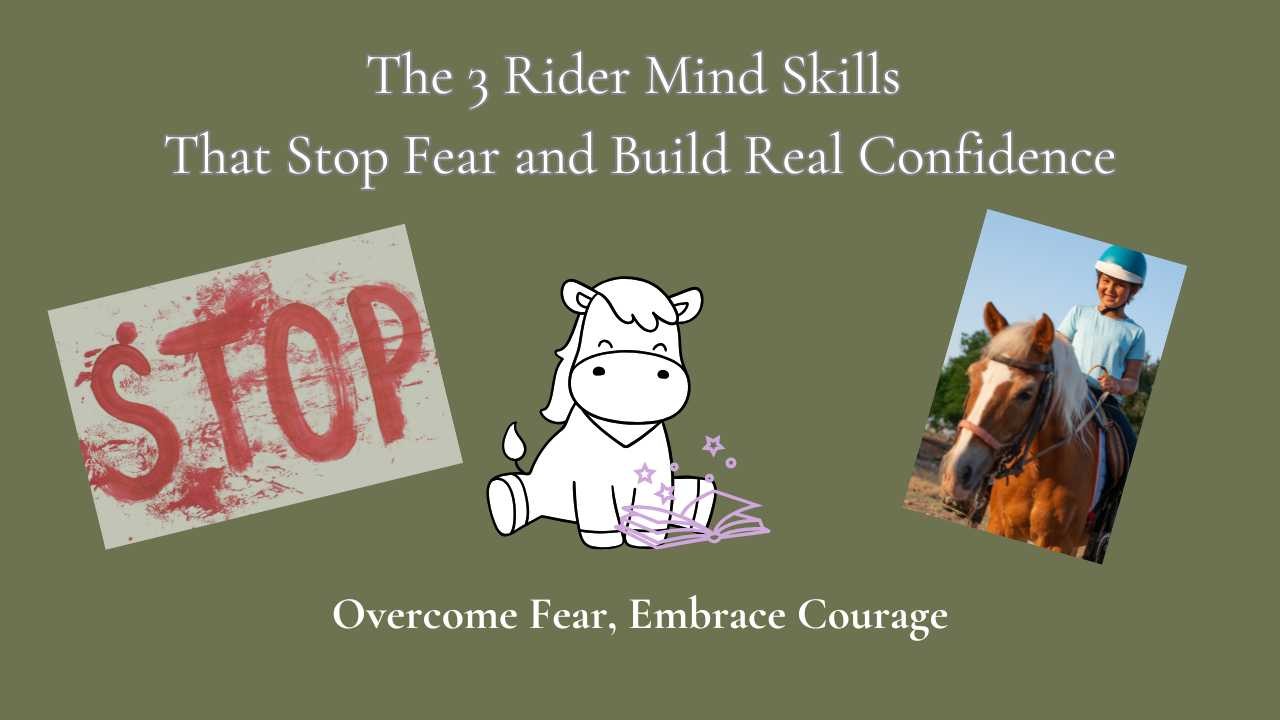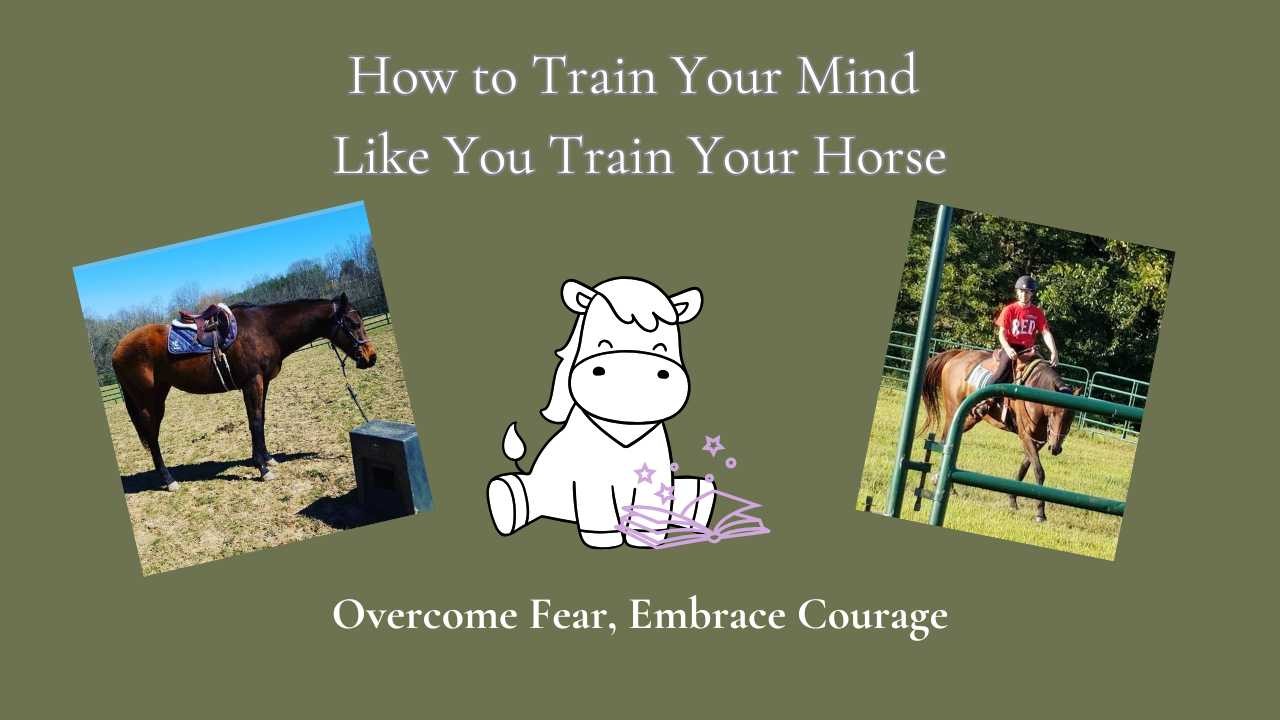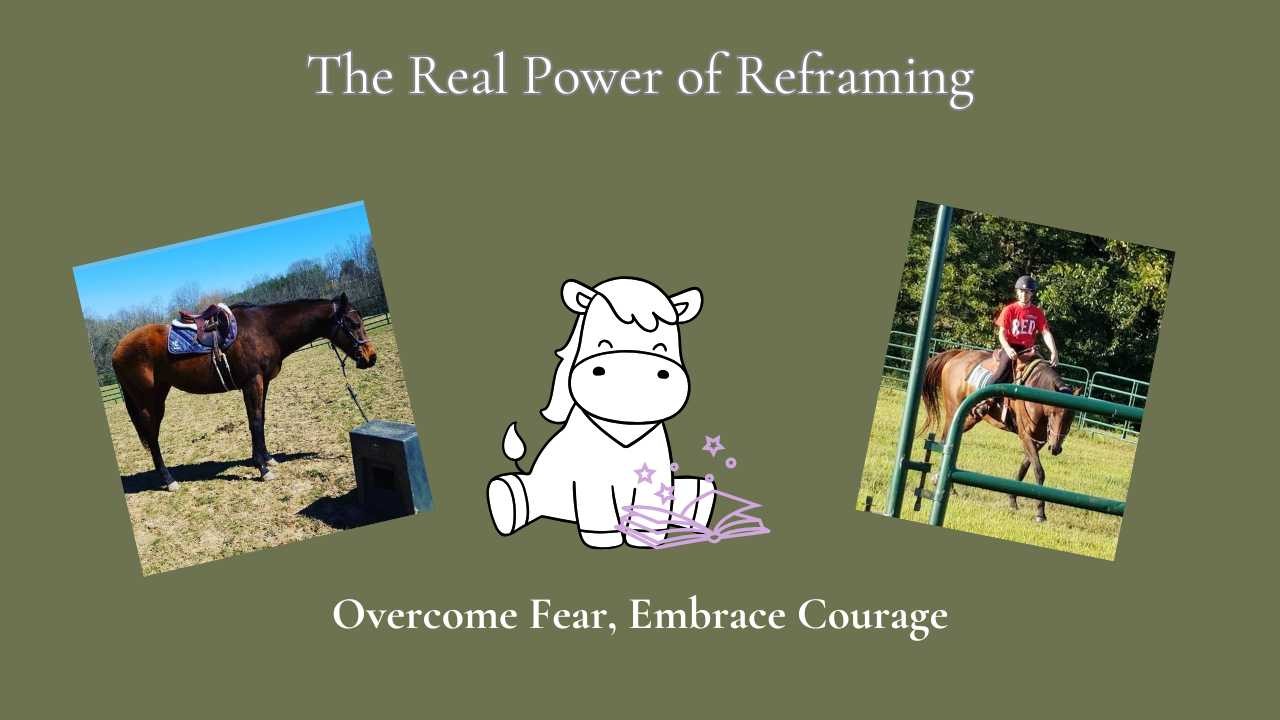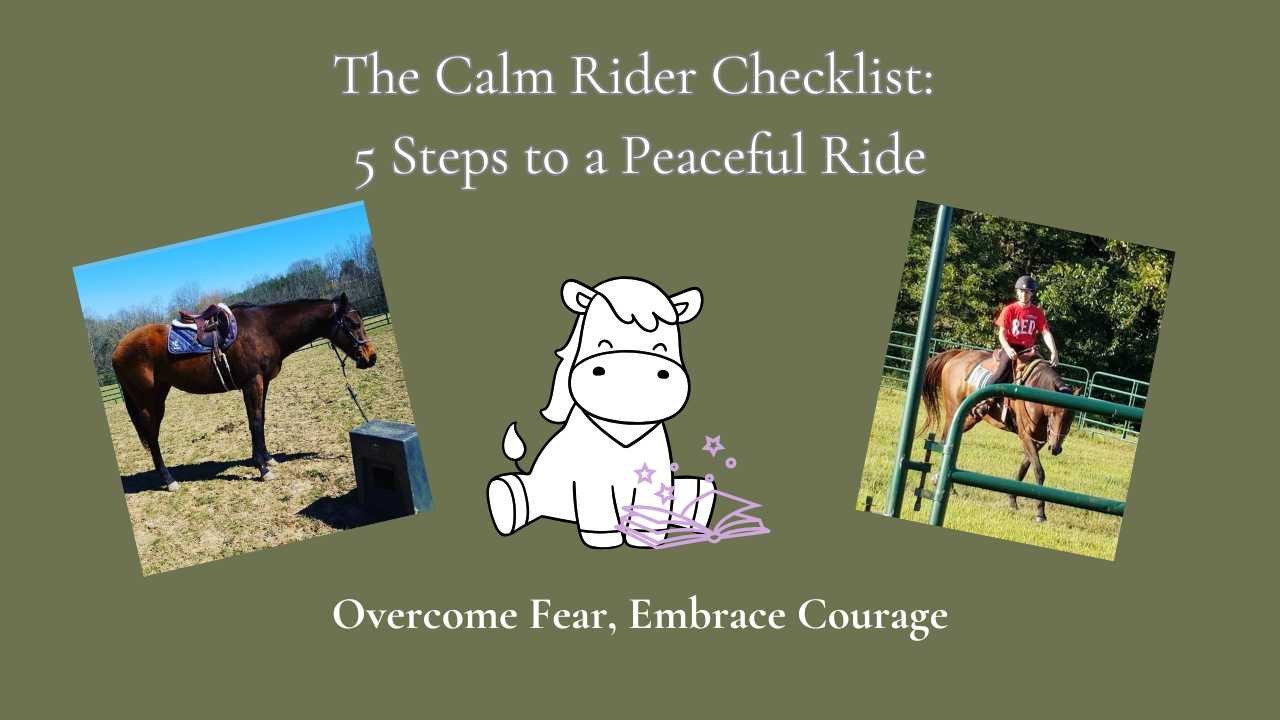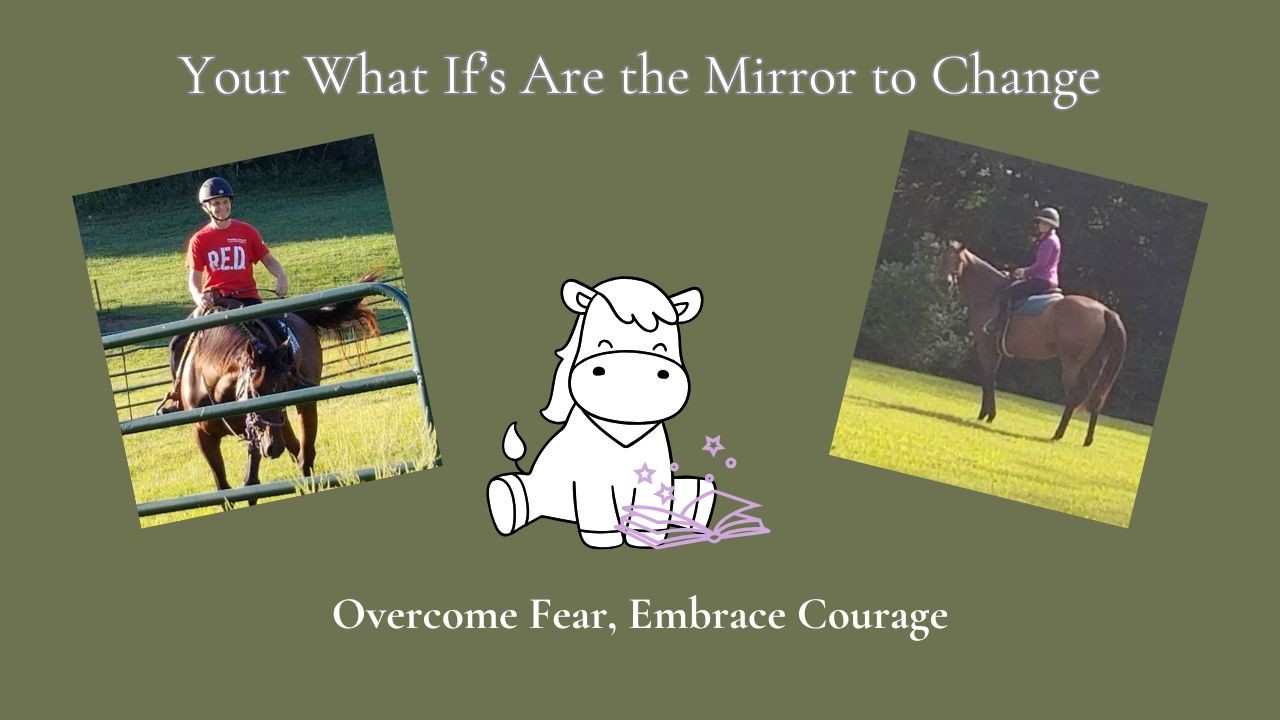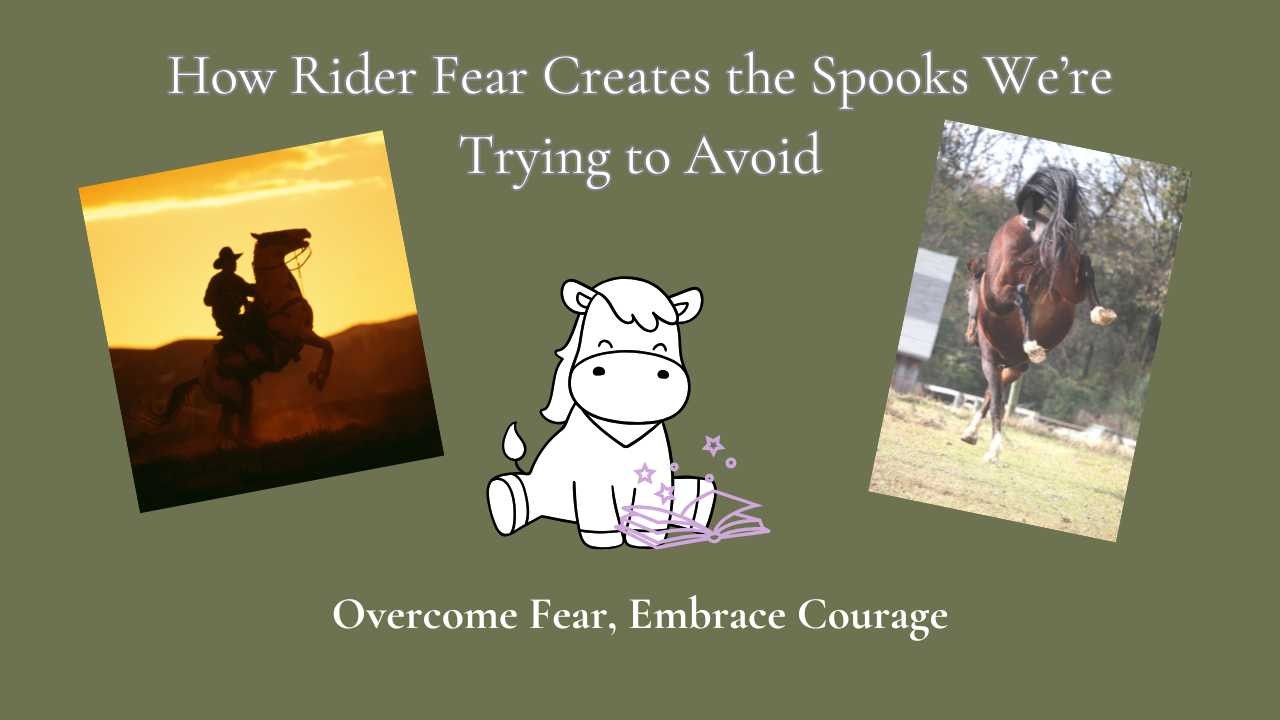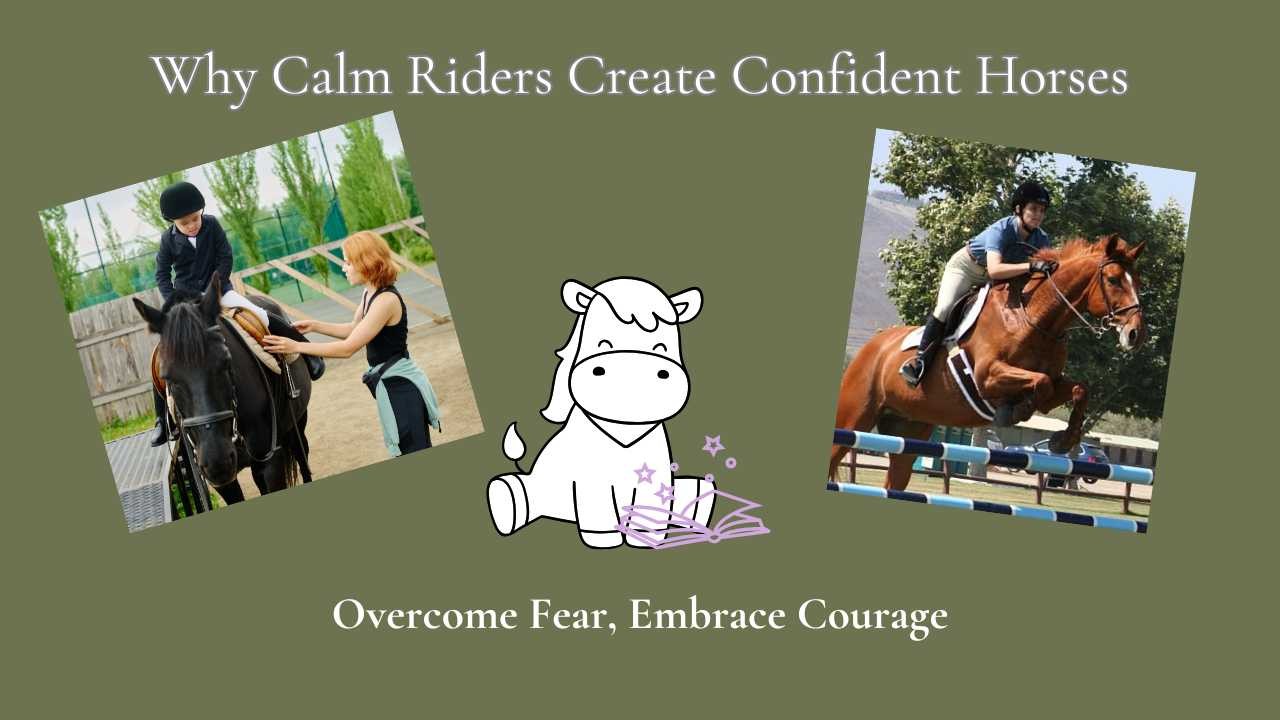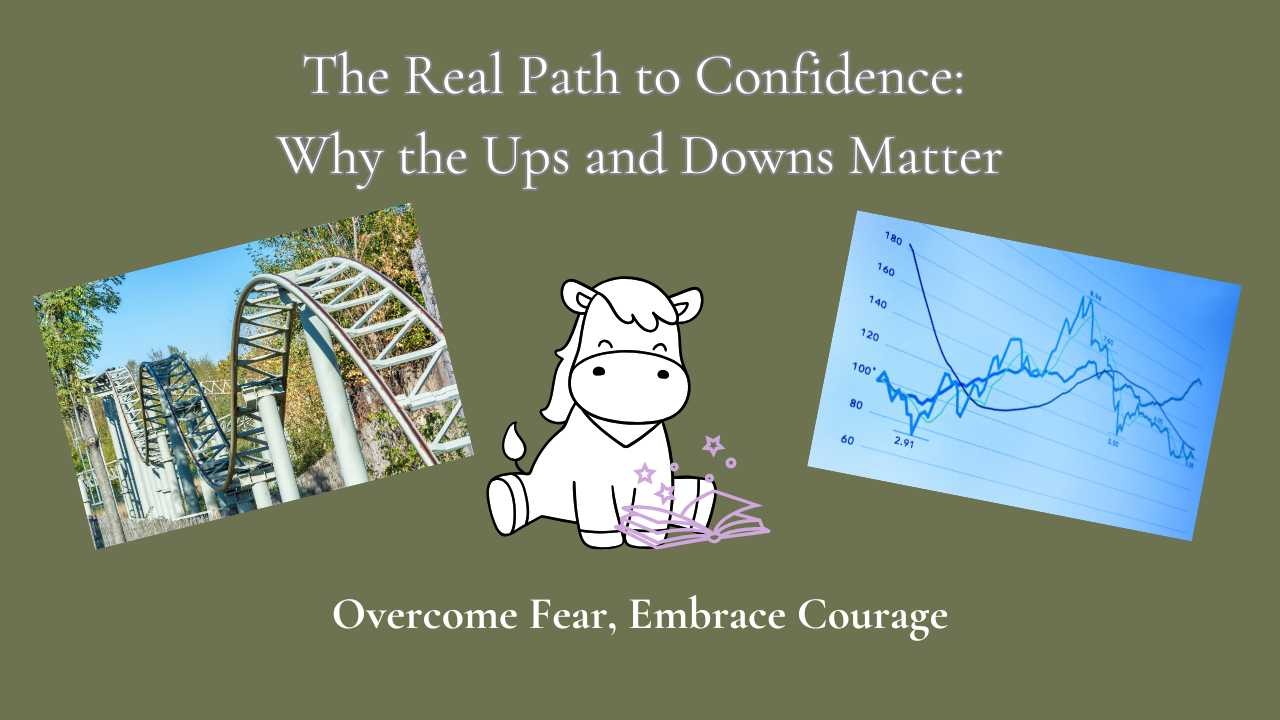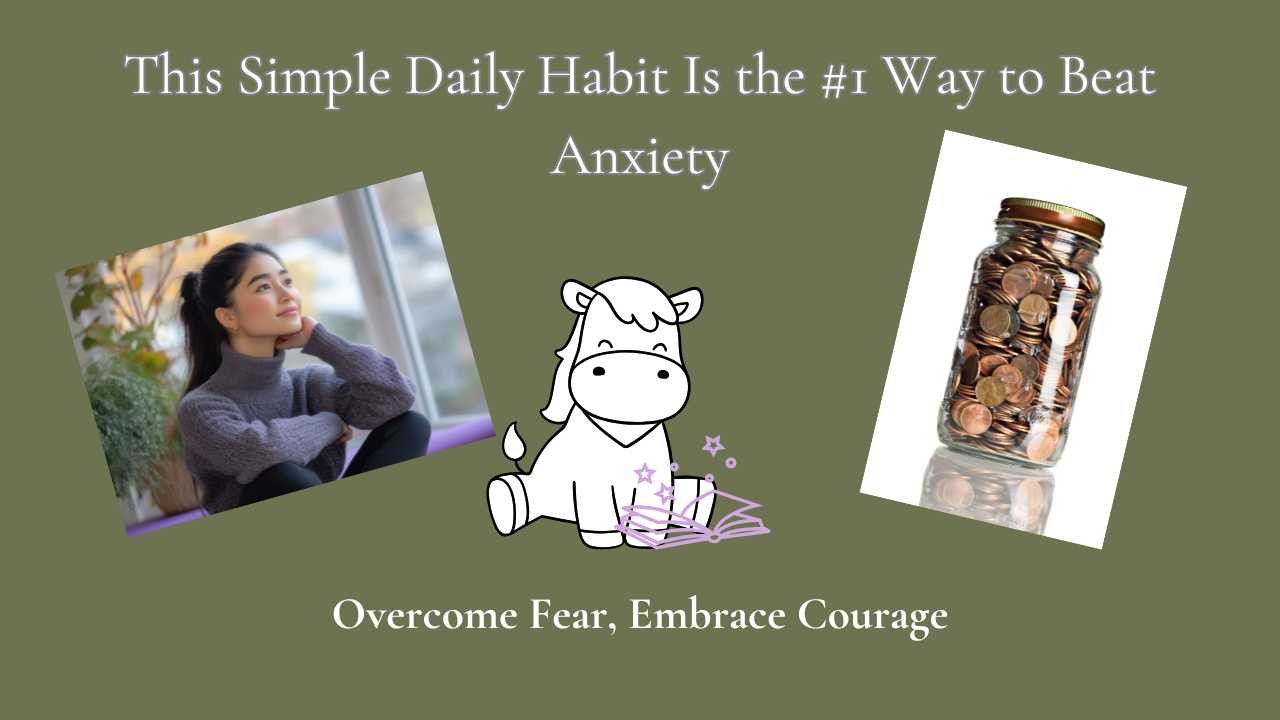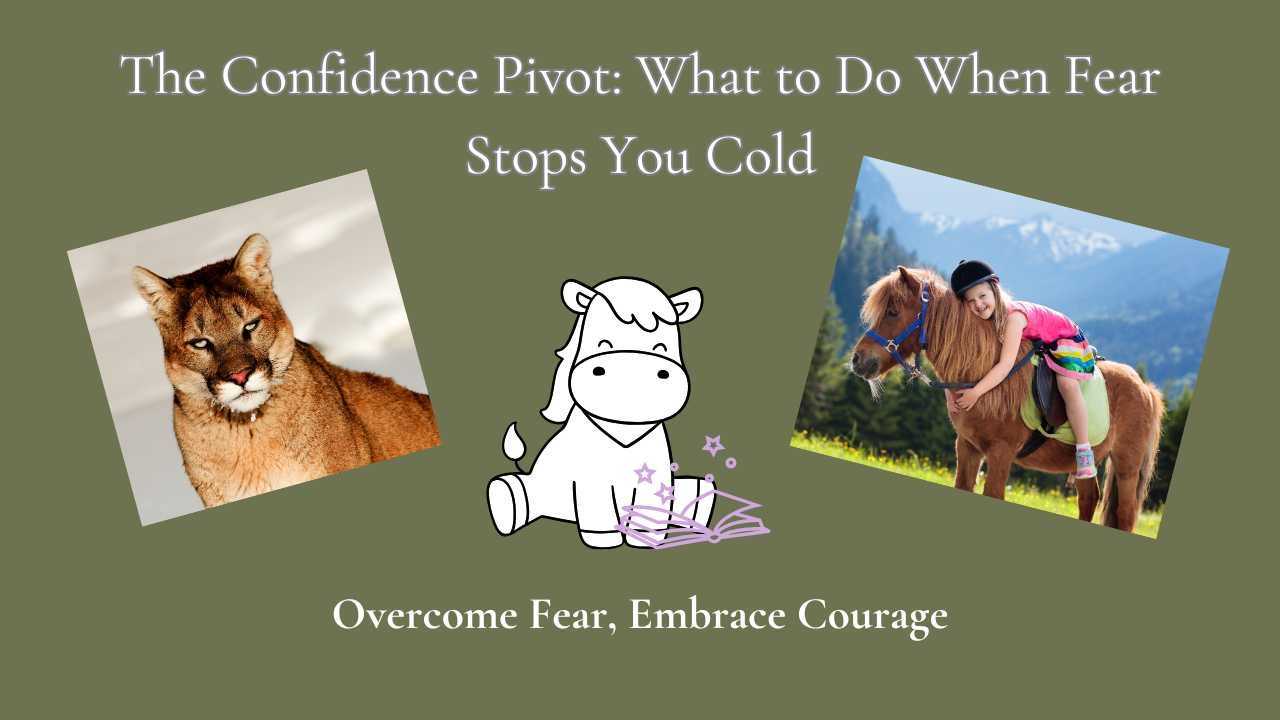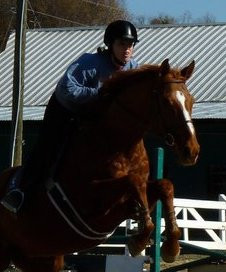
As horse riders, we have a unique challenge with setting a timeline for our goals, there are two of us (or more if we have more than one horse). I believe it is still important to set a timeline and make adjustments as necessary.
What does the timeline look like? First of all, we need to know what steps we need to take (and I lay these out for my journey back to courage in my book if you are interested in seeing one laid out as an example: Book)
Think about the things that need work and the process to accomplish your goals. This is the easy part and really just looking at where you are at today and where you want to be and what does the journey look like between those two points. Here are some of mine:
- Get healthy
- Get horse healthy
- Develop a plan for safety and execute the plan
- Get on
- Ride to the edge of my comfort zone
- ENJOY RIDING AGAIN!
Then, the more challenging part is to put that into a timeline. I knew my health wasn't going to be overnight and I also knew I would do that in parallel to the rest so it wasn't part of the overall timeline. I started it and continues to this day as I feel better and better as I get older! Win!
Getting the horses healthy had its ups and downs. The good thing with having multiple horses is that it gives me options so I can keep working on me and my courage while a horse may need a break here and there. Really, this is true of any goals that involve others, there are times we are on our game and times we rest and rejuvenate.
Developing a plan and implementing I could do in 30 days.
GET ON was a big one. It only takes 20 minutes to prepare, tack up and actually mount. This could not be used as an excuse to not meet the goal.
From there on out, it was building my courage, a little bit at a time.
As I look back, it took me almost 6 months but I think it could have been done in 3 months maximum. That means I had 3 months of excuses and reasons from the fear that held me back.
This year, I will do it in three months! I have had challenges and let that become excuses. It really wasn't about the timeline but more about my willingness to just push through and do what needed to be done to ride.
Do you have a timeline for your goal? Do you feel comfortable with all your steps to reach your goal? I have a few openings for courage coaching if you would like help making that goal successful and maybe even in less time than you thought possible! Schedule a 30 minute call and let's see if we can get you on track for this year to be YOUR YEAR!
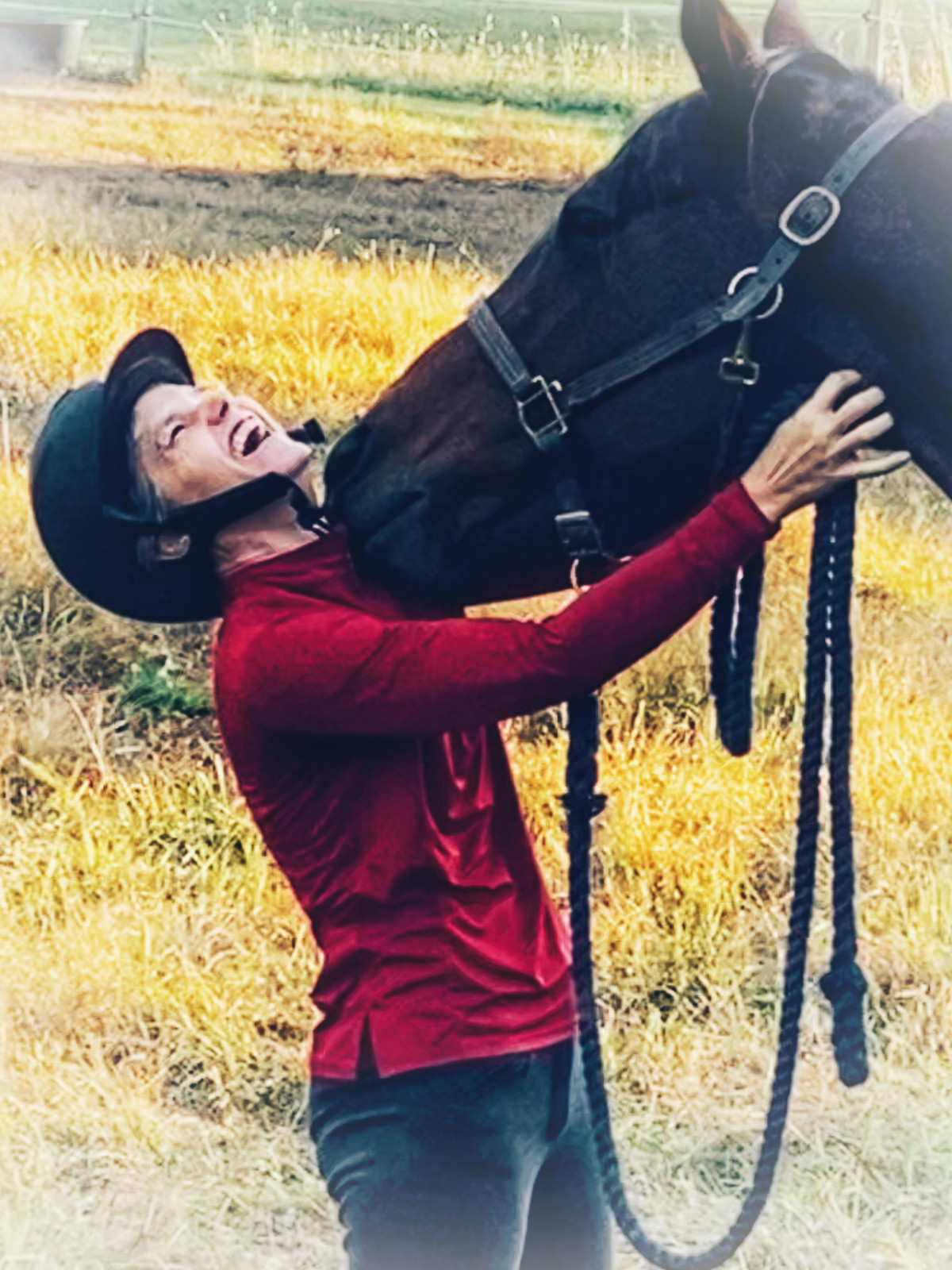
I was climbing down from the step stool in the rabbit area and just as I was stepping off, I panicked! My subconscious realized I would be stepping onto a snake. In the blink of an eye, my body was able to redirect my step to miss the snake. This triggered a number of thoughts for me.
1. My fear was subconscious. I didn't "think" there is a snake and jump, my body just did it and my mind caught up after the fact.
2. The fear was not in my mind. It turned out it was just a skin the snake had shed so I was not in real danger but my subconscious didn't know that.
3.. Fear doesn't take a vacation. I am not afraid of snakes, but I did jump at this to keep me safe. It happened on Thanksgiving day. My fear didn't take the day off for the holiday.
4.. Fear can take place anywhere, anytime. Fear doesn't care if you are sitting on the couch thinking about something that happened, or that it is really happening. Even now as I write about the snake I thought I saw, my heart rate and breathing rate go up. I am sitting on my couch.
Fear takes place in our subconscious first. It might be triggered by our thoughts, like me sitting on the couch writing this or it may be triggered by our senses but we don't think "I am going to be scared" and then be scared. Our subconscious takes over and keeps us safe, whether perceived, imaginary, or real fear.
This give us POWER. We get to choose to think about amazing, positive things so that at least the perceived and imaginary fear can leave us alone. We do have control of our mind and we can practice. Just like putting training wheels on a bicycle, we can practice courage and joy. We can change it around so that fear only takes place when it is actually keeping us safe. We don't want to ignore fear, but honor it, act if necessary, and move into courage and calm if we don't need to react.
Let's practice together!
1. Find a place to sit comfortably.
2.Think of the last thing that scared you that wasn't a big deal, just a little scare.
3. Observe your mind and body: Feel your breathing and your heart rate. Did they increase with the recall of the memory? Notice if how you feel changed. Did your anxiety increase?
4. Now, think about something calming for you or play some calming music.
5. Observe your mind and body as before.
6. Repeat until you can easily bring your feelings back to calm and courage. Then, you can increase the pressure from your memories or the "what if's" from the future.
7. Get really good and feeling the anxiety and fear, and calming back down.
If you would like to read my journey from fear to courage that is filled with ways to help you find your courage, grab my book now! CLICK HERE!
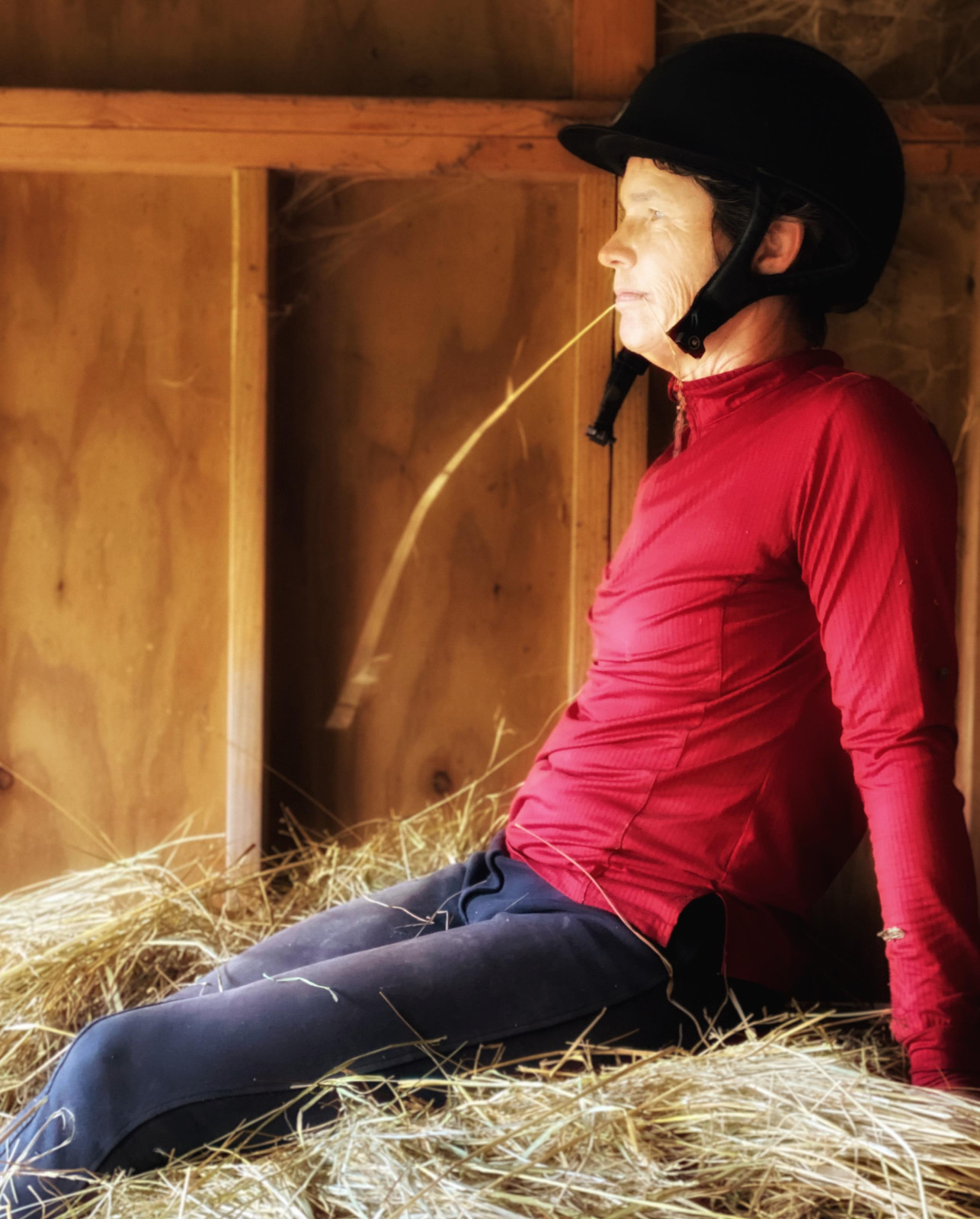
I was sitting there with my aunt to get our ears pierced, I was eleven years old and my aunt was too afraid to go alone so she gave me earrings for Christmas so we could go together. I am not a needle person. I didn't want pierced ears. I was terrified but I knew I had to buck up and be brave for her. And I did it! I got my ears pierced! I didn't die, I survived and it was a cherished memory.
Then disaster struck with the whole earring thing. What do you mean turn them every day? What do you mean take them out and put them back in? What do you mean change them out? ARE YOU KIDDING ME?????
I know this sound ridiculous, and often times fear seems ridiculous to everyone around us, they don't get it, they don't have our fear. This process, taught me how to find courage. How to take little steps, day after day to build courage. This taught me that yes, courage is a skill, that can be learned.
It took months. My dad had to turn my earrings and put the rubbing alcohol on them. After a few weeks, I was able to turn them, if I was laying down on the bed. My dad had to take them out and put them back in. After a few weeks, I could take the backs off. A few more weeks, I could pull them out. A few more months and I could put them back in and put the back on. Now, it is second nature.
Like many of you, we have areas of our life that are held back by fear. We can choose to learn how to have courage, or to let fear hold us back. We can choose to take the little tiny baby steps that are just out of our comfort zone, one little step at a time to learn courage. We get to overcome our fears, if we choose to. Think about courage as a learned skill. If you can learn anything, you can learn courage.
If you would like some help with learning courage, get my free guide, 6 Steps to Making Better Choices.
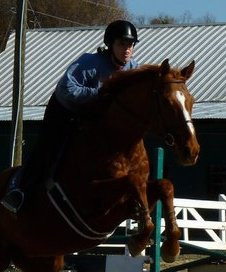
I went 15 years without falling and then competing in a big jumper class, I fell off over a jump. I was talking to my young friend about it and she realized, the last time I had fallen was before she was born and we just paused, and really connected in that moment. We all have the chance of falling or having an accident of any kind, may not even involve horses.
Fortunately, horses have the remarkable ability to help us conquer this fear and unlock our true potential. Let's explore how horses enable us to overcome the fear of falling and discover a new level of self-confidence.
1. Building Trust and Connection:
Horses are known for their intuitive nature and ability to form strong bonds with humans. When working with horses, we learn that trust is the foundation of any successful relationship. Through patient and consistent interaction, we develop a deep sense of trust with these majestic creatures. This trust-building process helps us overcome our fear of falling, as it allows us to relinquish control and rely on the strength and stability of the horse.
2. Developing Balance and Coordination:
Riding a horse requires a certain degree of balance and coordination. As we navigate the challenges of riding, we not only physically learn how to stay centered and in control but also mentally build the confidence needed to face the fear of falling. Horses teach us to embrace our body's natural power and work together in harmony to maintain balance, thus empowering us to overcome the fear that restricts our growth. They also encourage us to improve our health to be better riders!
3. Enhancing Self-Awareness:
Horses possess an ability to mirror our emotions and behavior, providing immediate feedback on our actions. Through this awareness, we can address and work through these emotions, gradually building our self-confidence in the face of falling. Courage pennies is a great way to track this amazing process of gaining courage! Soak up pennies every time you feel confident and use a penny or two when you have fear creap in. It is just a good visual to help!
4. Learning to Trust One's Intuition:
Horse riders begin to tap into their intuitive senses—gut feelings and instinctive responses to different situations. Trusting our intuition is crucial for overcoming the fear of falling, especially using this before we get on. Making sure everything with us and our horse is just right. It enables us to make split-second decisions and respond effectively. As we become more attuned to our intuition, we gain a deep sense of self-trust and confidence, further bolstering our ability to manage the fear of falling.
If you haven't read my book on getting over fear, it is a great process that helps anyone facing fear, know what steps to take to find courage again! You can get it here: Rise from Fear to COURAGE!
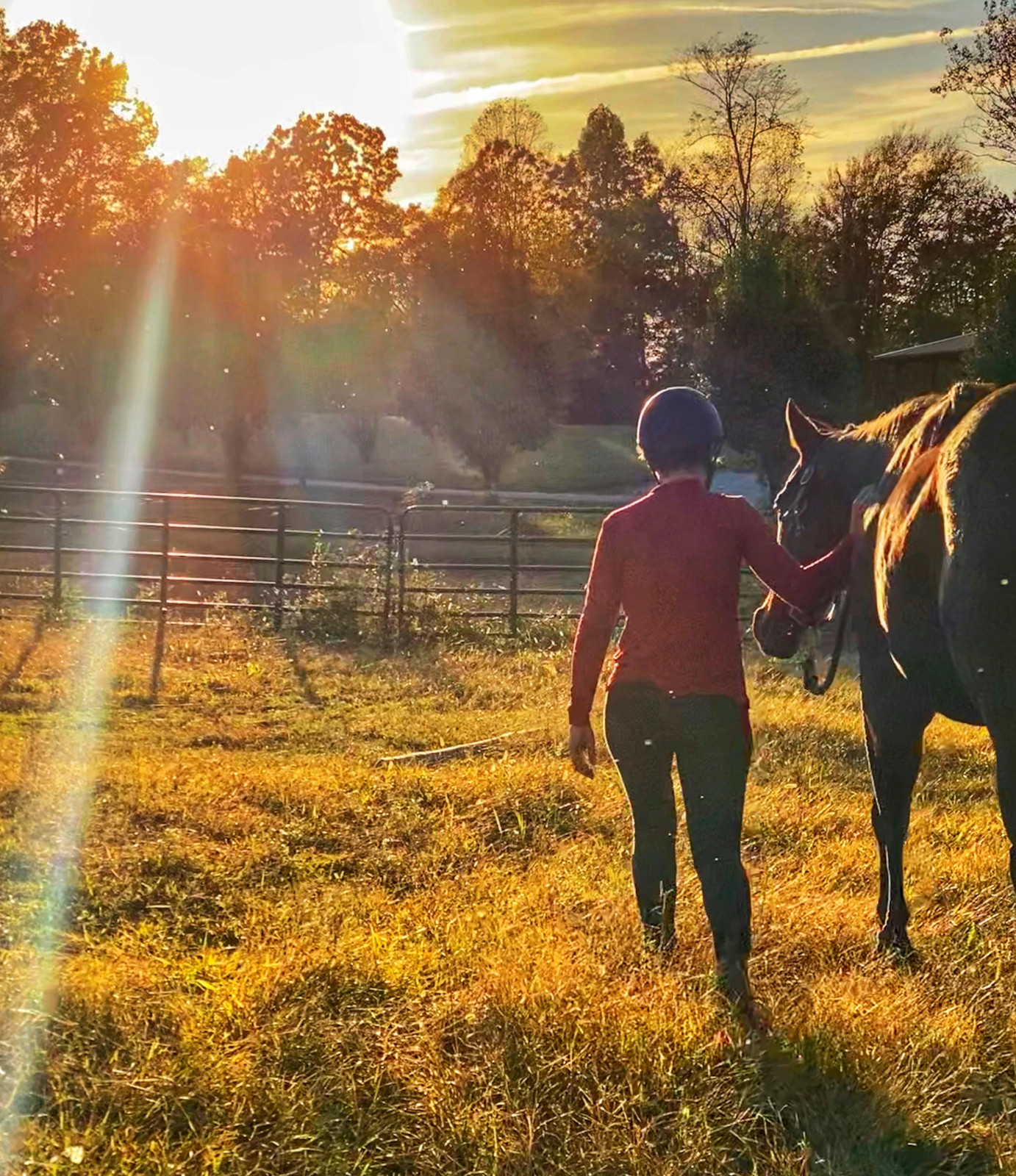
We can get STUCK in memories of the past, replaying events over and over in our minds. While small amounts of reflection can be beneficial, dwelling on the past can prevent us from being fully present.
Just like driving a car, constantly looking in the rearview mirror can cause accidents and prevent us from enjoying the journey and reaching our desired destination.
So how do we break free from these mental cycles and focus on the present?
1. Acknowledge and accept:
The first step to freeing ourselves from the grip of the past is acknowledge that it cannot be changed. Similar to driving, it's essential to accept that whatever happened behind us no longer affects the present moment. Embrace the idea that the past has already served its purpose as a teacher, offering valuable insights and lessons.
2. Practice mindfulness:
Just as a driver must remain attentive to the road ahead, practicing mindfulness enables us to shift our focus to the present. Mindfulness involves consciously bringing our awareness to the current moment, free from judgment or attachment. By being fully present, we can appreciate the beauty of life and let go of repetitive thoughts about the past.
3. Release the emotional burden:
Like baggage in the trunk of a car, our emotional attachment to past events can weigh us down. To move forward, it's vital to release negative emotions tied to the past. One powerful technique is visualizing packing up the memories in a suitcase and setting them down on a train depot platform and get on the train, leaving the baggage behind.
4. Set clear intentions:
Having a clear focus on our present goals brings purpose and direction to our lives. Just as a driver sets a destination on their GPS, establishing clear intentions helps us navigate through life without getting stuck in the past. Write down your dreams, and the steps required to achieve them. This practice will cultivate a forward-thinking mindset and keep your focus anchored in the present moment.
5. Practice gratitude:
Gratitude is a transformative practice that helps us shift our perspective from what went wrong in the past to what is going right in the present. Every day, take a moment to reflect on things you are grateful for. Embracing gratitude allows positive emotions to flood your being, making it easier to let go of past grievances and embrace the abundance around you.
Just as driving requires our attention on the road ahead, living our lives to the fullest demands an unwavering focus on the present moment. By letting go of the past, practicing mindfulness, and setting clear intentions, we can liberate ourselves from the mental loops that hold us back. Remember, the journey of life is meant to be enjoyed, and I am here to support you, every step of the way. So, buckle up, embrace the present, and let your dreams drive you forward!
If you want a little help, grab my free Mindfulness guide here!


